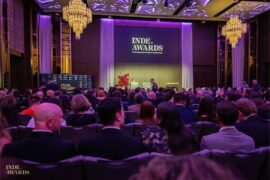In this whitepaper, Alspec takes a look at changes made to Section J of the 2019 National Construction Code for Windows and Doors, setting out how these changes impact specification and building design.

As demand for infrastructure and urban development grows, one of the Australian design and construction industry’s biggest challenges is implementing an effective strategy for reducing built environment emissions.
The National Construction Code (NCC) of Australia – a performance-based code that sets the minimum requirements for all new buildings and building work – plays a critical role, setting mandatory minimum requirements for energy efficiency and sustainability.
In 2019, the updated version of the NCC came into effect, which included the biggest overhaul of the decade of the energy efficiency provisions that apply to commercial and residential buildings. Modelling has shown that buildings constructed under the NCC 2019 could see a 30% increase in energy efficiency compared to buildings constructed under the NCC 2016.
Rewritten almost in its entirety, Section J Energy Effciency is the energy efficiency compliance benchmark for modern Australian buildings. Among the more notable changes are the new provisions impacting the external facade, including windows, doors and wall-glazing construction, that apply to commercial buildings in Classes 2-9.
In this whitepaper, Alspec take a closer look at the changes to Section J, with a particular focus on the new requirements for external facades. We also discuss in detail how these changes impact specification and building design.
"If the document hasn't automatically downloaded in 10 seconds, download here."
Please note by accessing advertiser content your details may be passed onto the advertiser for fulfilment of 'the offer' and also permits the advertiser to follow up the fulfilment of the offer by email, phone or letter. The subscriber also permits further communication from indesignlive.com.
INDESIGN is on instagram
Follow @indesignlive
A searchable and comprehensive guide for specifying leading products and their suppliers
Keep up to date with the latest and greatest from our industry BFF's!

For Aidan Mawhinney, the secret ingredient to Living Edge’s success “comes down to people, product and place.” As the brand celebrates a significant 25-year milestone, it’s that commitment to authentic, sustainable design – and the people behind it all – that continues to anchor its legacy.

The undeniable thread connecting Herman Miller and Knoll’s design legacies across the decades now finds its profound physical embodiment at MillerKnoll’s new Design Yard Archives.

The 2024 Sustainability Awards Winners bestowed its honours on 18 winners, with 10 others receiving honourable mentions — a small gesture for contributions that loom large in our shared narrative of sustainability.

Offering uninterrupted views and a fluid transition that blurs the boundaries between inside and out, this home shows what’s possible with high performance windows and door systems from Alspec®.
The internet never sleeps! Here's the stuff you might have missed

As a supporter of the 2025 INDE.Awards, COLORBOND® steel recognises the importance of the next generation of architects who are leading the way in creativity and innovation to help design and sustain our future.

Inspired by an unthinkable design challenge on Sydney Harbour, Materialised’s ingenuity didn’t just fuse acoustic performance with transparent finesse – it forever reimagined commercial curtain textiles by making the impossible possible.

A new online space offers designers enhanced tools, resources and real-time customisation.

London-based design duo Raw Edges have joined forces with Established & Sons and Tongue & Groove to introduce Wall to Wall – a hand-stained, “living collection” that transforms parquet flooring into a canvas of colour, pattern, and possibility.